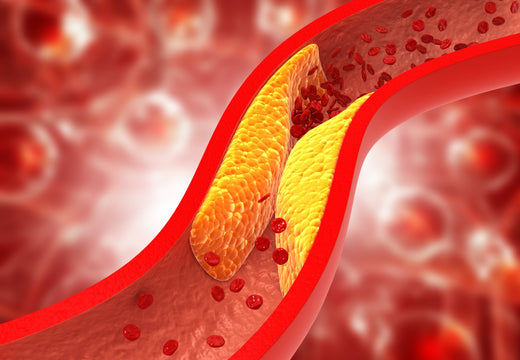Osteoporosis is a common condition that affects more than three million Americans each year. Those with this potentially serious bone disease experience low bone mass and density, which causes them to have brittle bones that are prone to breakage.
However, there are some early signs and symptoms of osteoporosis. Especially among those who know they have risk factors. Keeping an eye out for these signs can result in faster diagnosis and earlier treatment, limiting complications such as osteoporotic fractures (when osteoporosis sufferers experience a bone break).
What Does the Beginning of Osteoporosis Feel Like?
In the early stages of osteoporosis, bone density loss will begin, but this may not cause noticeable osteoporosis symptoms. In other words, the beginning of osteoporosis may not feel like anything.
Why Is Osteoporosis Called a "Silent Disease"?
Because osteoporosis may have no noticeable symptoms in its earliest stages, it has earned the label of a "silent disease." The condition can be challenging to diagnose until it results in a fracture or other more severe symptoms.
That's why it's essential to have regular check-ups and bone density screenings for early detection, especially for those who have other osteoporosis risk factors. These include being a post-menopausal woman, being over age 65, having menstruated for more than six months; being underweight (having a BMI of 19 or less), having low calcium intake; or having a family history of osteoporosis or hip fractures.
What Is the First Stage of Osteoporosis?
There are four stages of osteoporosis. The first stage of osteoporosis is relatively mild and occurs when you no longer produce new bone more quickly than your rate of bone loss. This shift typically happens around age 30. Those in the first stage of osteoporosis typically do not yet experience any symptoms at all, and their bone density remains normal.
How Quickly Does Osteoporosis Progress?
Osteoporosis can progress over decades as sufferer’s age and experience gradual loss of bone density and mass. Genetics, hormonal changes, and lifestyle choices can all affect the pace of progression, as can early treatment and other interventions such as supplement intake, which is why an early osteoporosis diagnosis is so valuable.
In its advanced stages, osteoporosis can be disabling, as it makes bones fragile and prone to fractures with even minor stress or activities of daily living. This increased vulnerability to fractures and skeletal deformities can significantly limit sufferers' mobility and overall functionality.
What Are the Warning Signs of Osteoporosis?
Although those with osteoporosis do not experience any symptoms at all in stage one, they may begin to notice the following osteoporosis signs and symptoms as they reach stages two or three of the disease:
Low Bone Density
Low bone density is the crucial hallmark of osteoporosis, making it the most critical warning sign of the disease’s progression. It is measured using a number known as a "T-score."
Osteopenia Vs. Osteoporosis
Both osteopenia and osteoporosis involve loss of bone density, but osteoporosis is the more severe version of osteopenia.
T-Score Ranges
A T-score is a bone density measure found by using a bone density scan. The lower someone's T-score is, the lower their bone density is and the more serious their bone deterioration may be.
Those in the first stage of osteoporosis will have a normal T-score of about +1 to -1. By the second stage, they may receive a diagnosis of osteopenia, which means their T-score ranges from -1 to -2.5. Being in stages three and four means you officially have osteoporosis, and your T-score is less than -2.5.
Bone Fractures from Everyday Activity
One of the most notable signs of osteoporosis is experiencing bone fractures from everyday activity, such as a simple fall or bumping into something. In a healthy person with average bone density, these everyday bumps don't cause fractures, but they can have severe consequences in people with osteoporosis.
Height Loss
Especially in the absence of an apparent cause, such as another kind of spinal condition, losing height over time can be another sign of osteoporosis, as weakening bones may lead to compression fractures in the spine.
Curved or Hunched Upper Back
A curved or hunched upper back and a stooped posture can be a visible sign of osteoporosis, reflecting vertebral compression fractures in the upper back. In its most severe form, this is known as a "dorsal kyphosis" or a "dowager's hump," and can lead to severely compromised mobility as well as pain.
Spontaneous Back Pain
Spontaneous back pain can also be a sign of osteoporosis in the absence of a specific causal injury. It may be linked to vertebral compression fractures and other skeletal issues caused by weakened bones.
Dental Issues
Osteoporosis may result in dental complications like tooth loss and gum disease because it is thought to cause changes to the jaw, which is essential for holding your teeth in place.
Brittle Fingernails
Those with osteoporosis tend to have weaker fingernails than those with average bone density. In other words, if your bones are brittle, your fingernails may likely be brittle too.
Reduced Grip Strength
Low grip strength is often associated with low bone mineral density and is thought to be a substantial risk factor for osteoporosis.
Changes in Exercise Capacity
More difficulty, reduced endurance with exercise, or systemic effects of physical performance can often indicate osteoporosis. This is typically due to decreased bone density.
Best Supplements for Osteoporosis
There are numerous supplements on the market that claim to support bone health and density while reducing the risk and complications of osteoporosis. But which supplement is the top choice for treating osteoporosis?
Osteo Plus
Inner Thera's Osteo Plus is formulated to provide advanced support for bones and joints and checks all the right boxes for a top-of-the-line osteoporosis supplement.
Manufactured in a US-based, FDA-regulated facility and third-party tested for purity and potency, Osteo Plus contains a combination of four key ingredients that may support bone formation and strength, fight the risk of bone loss, and promote healthy mobility and flexibility.
The four key ingredients are:
-
OLIVE LEAF EXTRACT
Bone-building olive leaf extract, Bonolive®, is highly bioavailable and has been shown to protect against bone loss by increasing osteoblast activity (cells that form new bones and heal existing bones). Olive leaf extract benefits may also include increased calcium uptake and reduced pain in aging joints.
-
VITAMIN D
Adequate Vitamin D3 is essential for calcium absorption and bone health. The form of Vitamin D3 found in Osteo Plus is also plant-based and supplies 313% of your daily recommended levels of this essential vitamin.
-
VITAMIN K
Osteo Plus contains K2Vital® Delta, a highly stable and bioactive form of vitamin K that helps the calcium that you consume reach your bones and teeth. It's also double-coated to ensure it survives the gut process and avoids degradation.
-
CALCIUM
Albion® calcium malate is a bioavailable form of calcium that binds two calcium molecules with one molecule of malic acid (an amino acid). This means that more calcium is absorbed from this supplement than those containing other forms of calcium.
Each person, diagnosis of, and cause of osteoporosis is unique. Before incorporating Osteo Plus into your daily regimen, please speak with your physician to confirm that this supplement is appropriate for your unique health situation.







